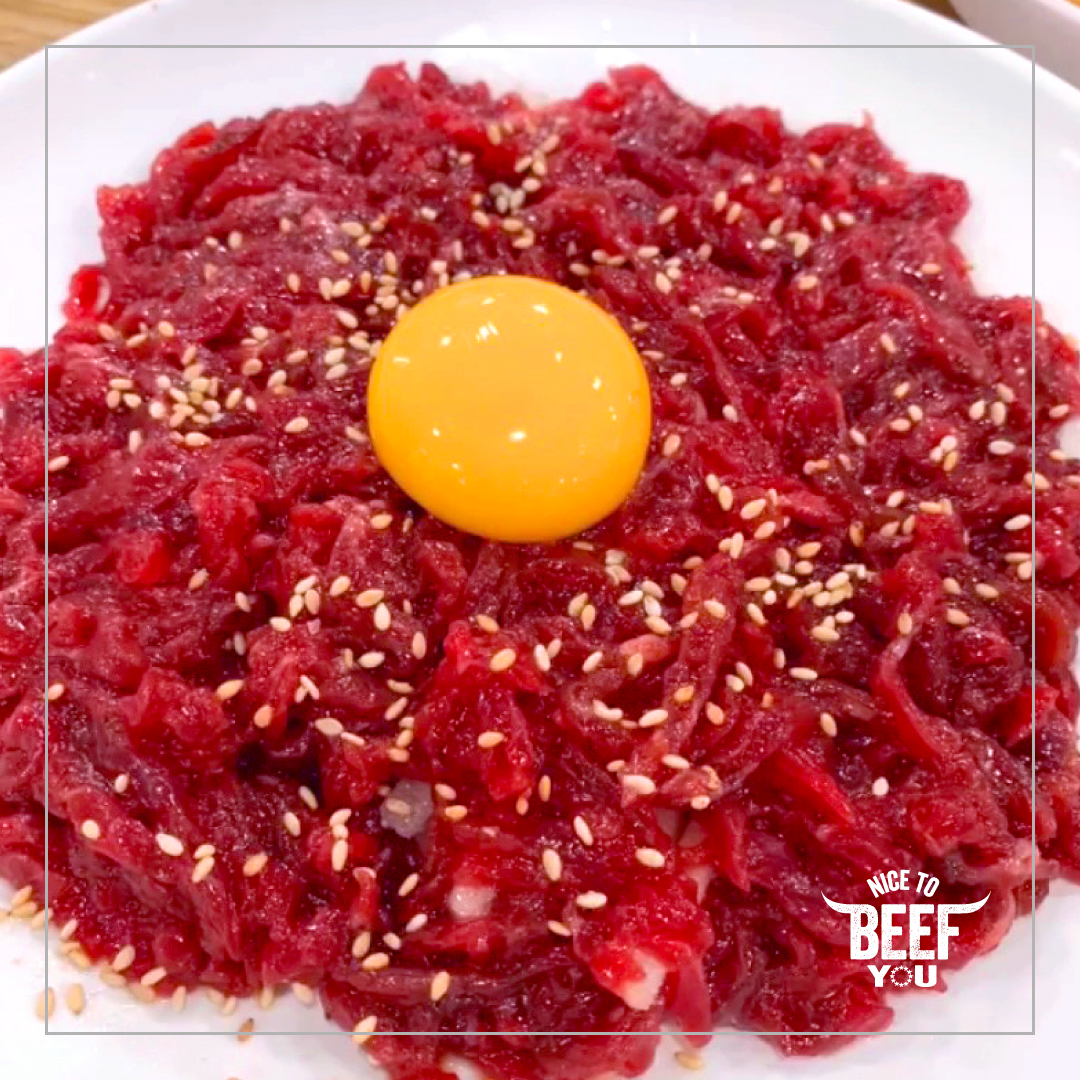Yukhoe

Ingredients
-
1 pound beef tenderloin, very finely sliced
-
1 scallion, finely chopped
-
1 pear, peeled, cored and cut into fine matchsticks
-
1 egg yolk
-
1 tablespoon pine nuts, lightly toasted
-
Some radish seedlings and sprouts, for serving
Marinate:
-
2 tablespoons soy sauce
-
1 tablespoon sesame oil
-
1 tablespoon sugar
-
1 tablespoon honey
-
2 garlic cloves, minced
-
1/2 teaspoon ginger, minced
-
1/4 teaspoon black pepper, freshly ground
-
1 tablespoon sesame seeds, lightly toasted
Elaboration
- Always choose high quality beef when making yukhoe. There are some best cuts that suit this dish. Tenderloin, also called filet mignon, is the most tender cut and contains just the right amount of fat for beefy flavor. Top-round, striploin, sirloin and rump are other good choices. These beef cuts are low in tendons and fat so that the sweetness is accentuated.
- Sauce is the very soul to Yukhoe. In a large mixing bowl, combine the soy sauce, sesame oil, sugar, honey, garlic, ginger, and black pepper. Whisk together until the sugar is dissolved.
- Add the finely sliced beef to the mixing bowl, and toss well to coat with the marinade.
- When ready to serve, place the marinated beef on a serving platter, and use your hands to shape it into a mound in the center.
- Plating: Sprinkle the toasted pine nuts, sesame seeds, and scallion over the beef tart and finish with the fresh egg yolk placing in the middle of the beef tart. Set aside the sliced pear and some fresh vegetables like radish seedlings and sprouts.
- To serve, use a spoon to gently mix the egg yolk into the beef and other ingredients. Enjoy!
Note: Be sure to use the freshest and premium quality beef, and always ask for advice from a professional and reputable butcher shop when making this dish.
Photo credits:©EUBEEFASIA
Funded by the European Union. Views and opinions expressed are however those of the author(s) only and do not necessarily reflect those of the European Union or the European Research Executive Agency (REA). Neither the European Union nor the granting authority can be held responsible for them.



